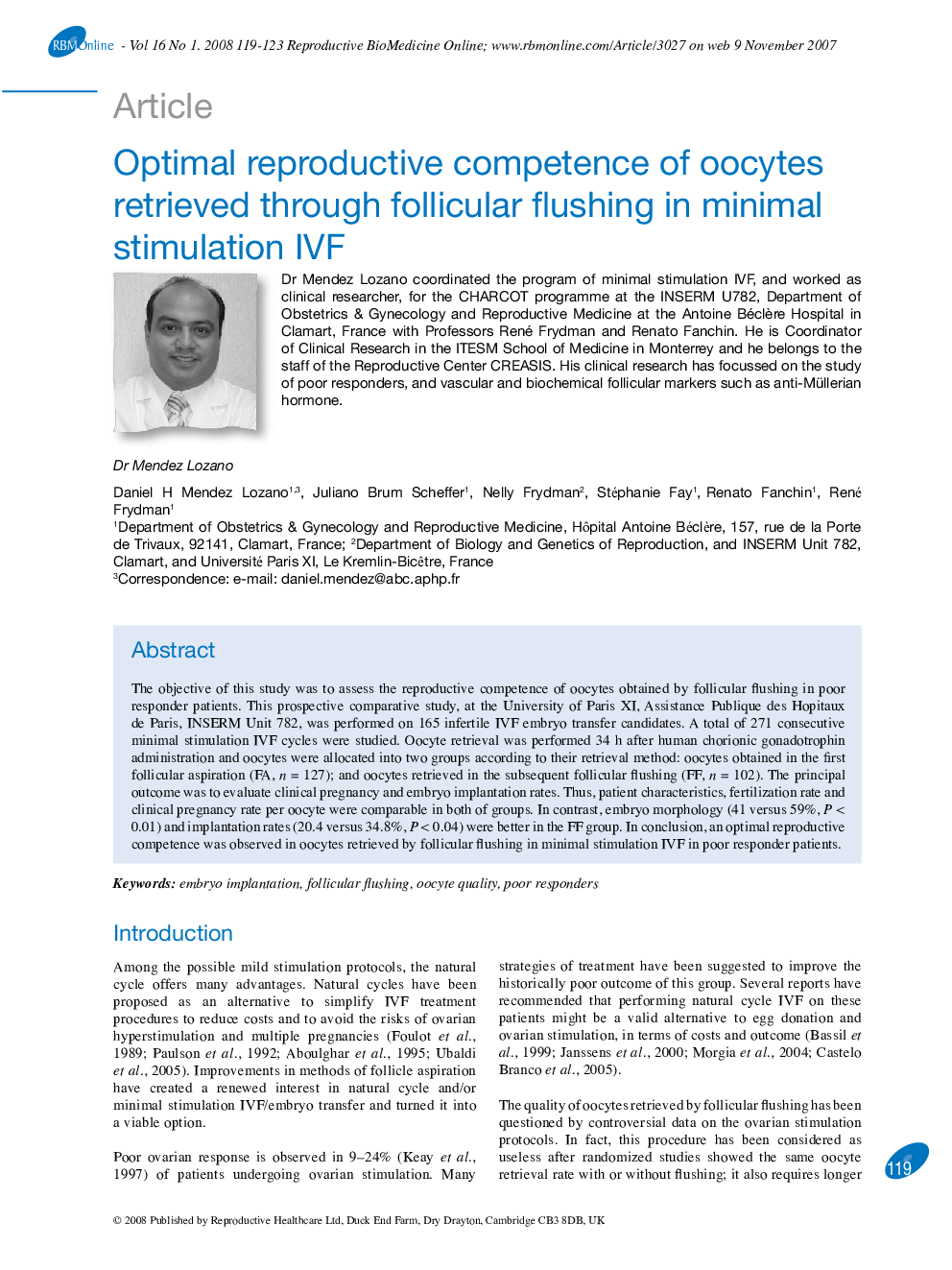| Article ID | Journal | Published Year | Pages | File Type |
|---|---|---|---|---|
| 3972890 | Reproductive BioMedicine Online | 2008 | 5 Pages |
The objective of this study was to assess the reproductive competence of oocytes obtained by follicular flushing in poor responder patients. This prospective comparative study, at the University of Paris XI, Assistance Publique des Hopitaux de Paris, INSERM Unit 782, was performed on 165 infertile IVF embryo transfer candidates. A total of 271 consecutive minimal stimulation IVF cycles were studied. Oocyte retrieval was performed 34 h after human chorionic gonadotrophin administration and oocytes were allocated into two groups according to their retrieval method: oocytes obtained in the first follicular aspiration (FA, n = 127); and oocytes retrieved in the subsequent follicular flushing (FF, n = 102). The principal outcome was to evaluate clinical pregnancy and embryo implantation rates. Thus, patient characteristics, fertilization rate and clinical pregnancy rate per oocyte were comparable in both of groups. In contrast, embryo morphology (41 versus 59%, P < 0.01) and implantation rates (20.4 versus 34.8%, P < 0.04) were better in the FF group. In conclusion, an optimal reproductive competence was observed in oocytes retrieved by follicular flushing in minimal stimulation IVF in poor responder patients.
